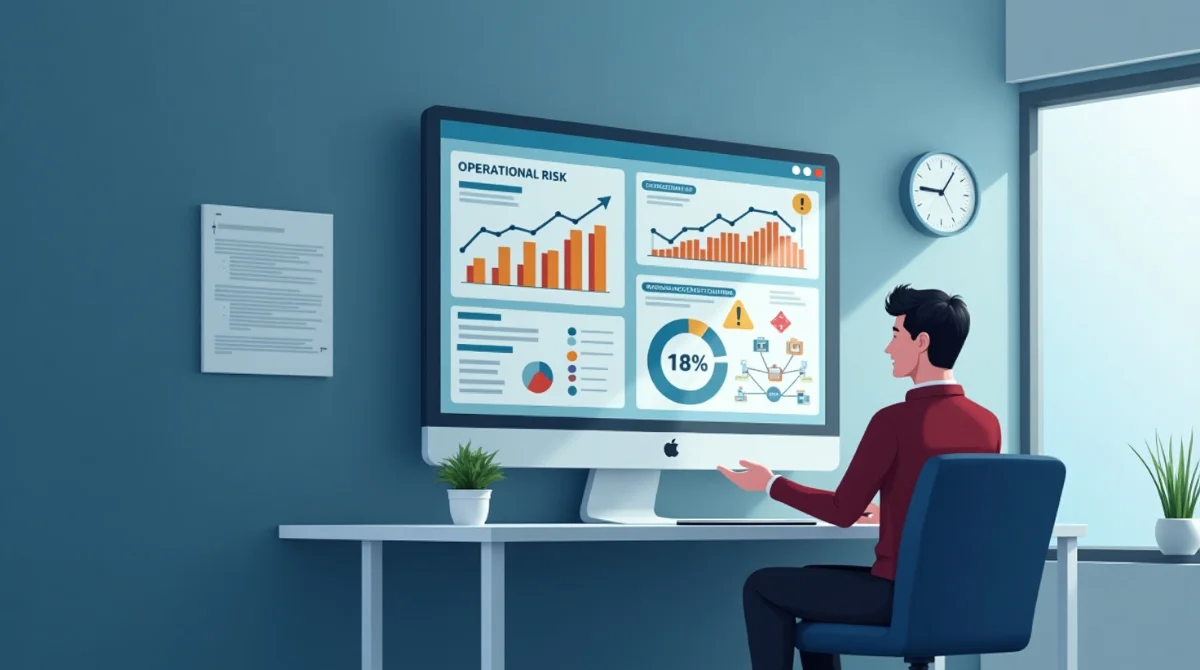What Are KRIs Key Risk Indicators?
KRIs Key Risk Indicators are measurable signals that warn businesses about potential risks early. Like dashboard lights in a car, they help spot problems before they grow. By tracking these indicators, companies can act quickly to prevent damage, making KRIs essential for effective risk management in any business.
Why Are KRIs Key Risk Indicators Important?
KRIs Key Risk Indicators are important because they help companies spot problems before they grow out of control. Without KRIs, businesses often only react after something bad happens. However, they can plan ahead and act when KRIs are in place.
For example, a sudden increase in customer complaints could be a sign that a product or service is not meeting expectations. A smart business would see this as a warning and act fast to fix the issue. Time, money, and reputation are all saved by this proactive strategy. In short, KRIs Key Risk Indicators help businesses make better decisions, avoid surprises, and stay competitive.
Types of Risks
Every business faces different types of risks. KRIs Key Risk Indicators can be used to track many of these, such as:
- Financial Risk: These include cash flow issues, unpaid invoices, or cost overruns.
- Operational Risk: Mistakes in daily work, supply chain delays, or system failures.
- Compliance Risk: Breaking laws, missing regulatory deadlines, or data misuse.
- Strategic Risk: Poor planning, weak competition response, or changing customer needs.
- Reputational Risk: Bad customer reviews, scandals, or public complaints.
Each risk type needs its own set of KRIs to monitor early signs of trouble.
How to Create Effective KRIs Key Risk Indicators?
Building useful KRIs Key Risk Indicators doesn’t need to be complex. Follow these steps to create clear, practical indicators:
1. Identify Key Risks
First, figure out what risks your business faces. Look at past problems, industry trends, and potential weak spots in your processes.
2. Align KRIs With Business Goals
Your KRIs should match your company’s mission and objectives. For example, if timely delivery is critical, one KRI might track the percentage of late shipments.
3. Choose Measurable Data
Effective KRIs Key Risk Indicators rely on clear, trackable numbers. Vague or guess-based indicators won’t help you take real action.
4. Set Thresholds for Action
KRIs should have limits that tell you when something needs attention. For example, if customer complaints exceed 50 per week, it might trigger a team review.
5. Review and Adjust Regularly
As your business changes, so should your KRIs. Keep reviewing them to make sure they still reflect the current risks and needs.
Real-Life Examples
Different industries use different KRIs Key Risk Indicators. Here are some real examples:
In Banking:
- Loan default rate
- Fraudulent transaction count
- Customer churn rate
In Healthcare:
- Medication error rate
- Hospital readmission numbers
- Patient satisfaction scores
In Retail:
- Product return rate
- Inventory shrinkage
- Customer complaint volume
In IT and Tech:
- System downtime in hours
- Number of security breaches
- Unresolved support tickets
These examples show how KRIs can be used across all types of businesses to detect problems early.
Difference Between KPIs and KRIs
Some people confuse KPIs (Key Performance Indicators) with KRIs Key Risk Indicators, but they are not the same. KPIs track success and progress toward goals, like increasing sales or boosting customer satisfaction. KRIs, on the other hand, track potential problems and warning signs.
Think of KPIs as tools that tell you how well you’re doing, while KRIs tell you if something might go wrong soon. Although they have different functions in a risk management system, both are beneficial.
Common Mistakes When Using KRIs Key Risk Indicators
While KRIs can be powerful, they only work if used the right way. Avoid these common mistakes:
- Using too many KRIs: Focus only on the most important risks to avoid confusion.
- Choosing the wrong indicators: If your KRIs don’t match real risks, they won’t help.
- Not acting on signals: If a KRI crosses a limit and no one does anything, it’s useless.
- Poor data quality: KRIs are unreliable when the data is out-of-date or inaccurate.
For maximum benefit, keep everything straightforward, pertinent, and actionable.
Best Practices for Managing KRIs Key Risk Indicators
Use these pointers to maximize your KRIs (Key Risk Indicators):
- Start small and grow: Begin with 3–5 key indicators and expand only as needed.
- Train your team: Everyone should understand what KRIs are and why they matter.
- Use technology: Automated dashboards and alerts help track KRIs in real time.
- Review regularly: Check if KRIs are still relevant and update them as your business evolves.
- Communicate clearly: Make sure results are shared and discussed across teams.
KRIs in Enterprise Risk Management (ERM)
In Enterprise Risk Management (ERM), KRIs are central. ERM is a full approach to managing risks across an entire business. KRIs Key Risk Indicators support ERM by providing real-time data that helps leaders understand risk exposure and make informed decisions. They bring together strategy, risk, and performance into one connected system. This makes the business more stable, prepared, and ready to grow confidently.
Cocclusion
KRIs Key Risk Indicators are essential tools for any business that wants to manage risk wisely and avoid costly surprises. They act like early warning systems that give you time to fix issues before they grow into bigger problems. By choosing the right indicators, tracking them regularly, and responding quickly, your business can stay strong even in uncertain times. Whether you’re in finance, healthcare, retail, or tech, KRIs can help you protect your operations and support smart decision-making. Investing in KRIs is not just about reducing risk it’s about building a safer, stronger future.



